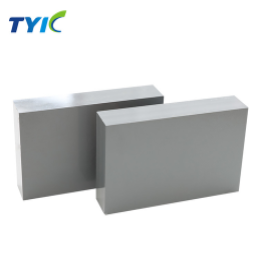PVC sheet packaging rigid sheet is widely used in the field of medicine, especially in the field of medicine blisters. Among them, natural products and traditional Chinese medicine preparations will be contaminated by molds and actinomycetes during the preservation process because they contain a large amount of organic compounds, and their shelf life will be shortened. At present, the common practice of antibacterial PVC sheet hard sheet is to add an antibacterial inorganic compound to the polymer compound during compounding, and then calender to form, so that the surface of the hard sheet is covered with an antibacterial inorganic compound layer. The known antibacterial inorganic compounds generally include antibacterial ions in alum and zeolite, that is, in the existing pharmaceutical packaging, an antibacterial layer is formed by adding alum or zeolite to the existing polymer compounds.
However, it must be pointed out that because the particulate antibacterial agent cannot be well dispersed, it may affect the clarity, transparency and anti-fogging performance of the rigid PVC sheet, and may also affect the adhesion performance, which will seriously affect the The actual use in the packaging will ultimately affect its commercial value. At the same time, in the process of packaging the rigid sheet, heating makes the trace chlorine released from the PVC sheet combine with metal ions such as silver, and the barrier layer formed on the surface of the rigid sheet will also have a certain impact on the antibacterial layer. The amount of antibacterial inorganic compounds added to the PVC sheet at the same time must also be appropriate, because of its physical properties, if it is added in excess, it may cause the final product to be unprocessable and usable.

